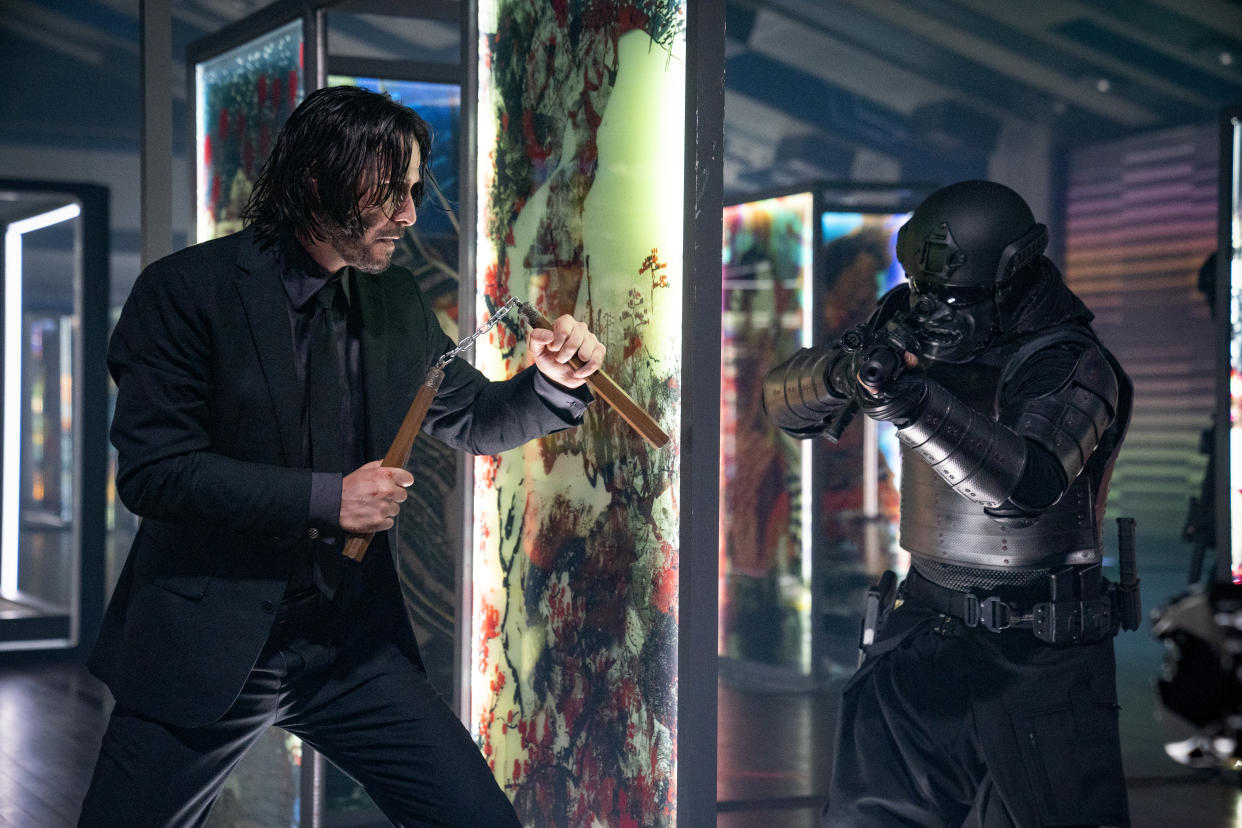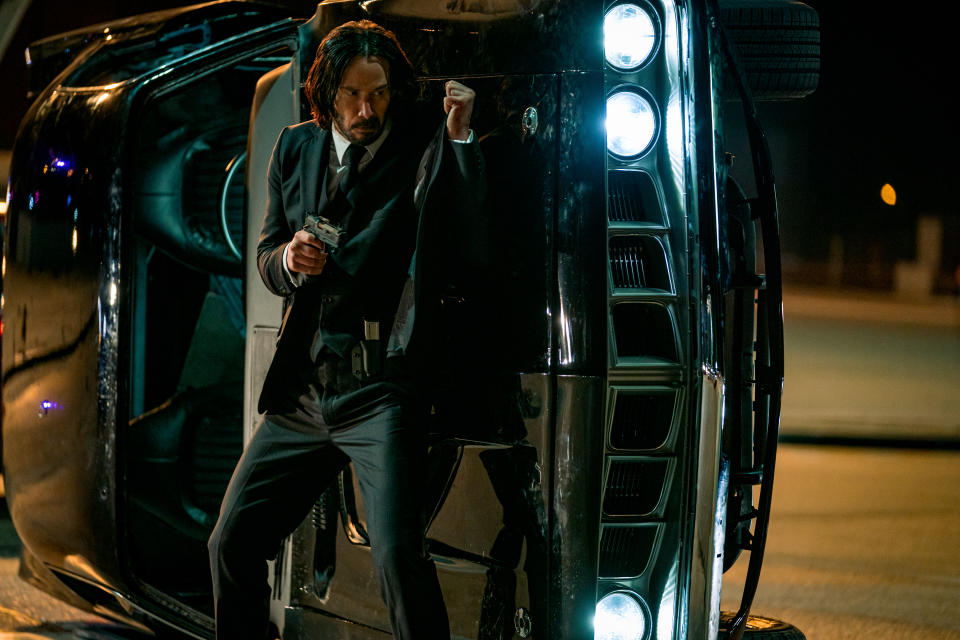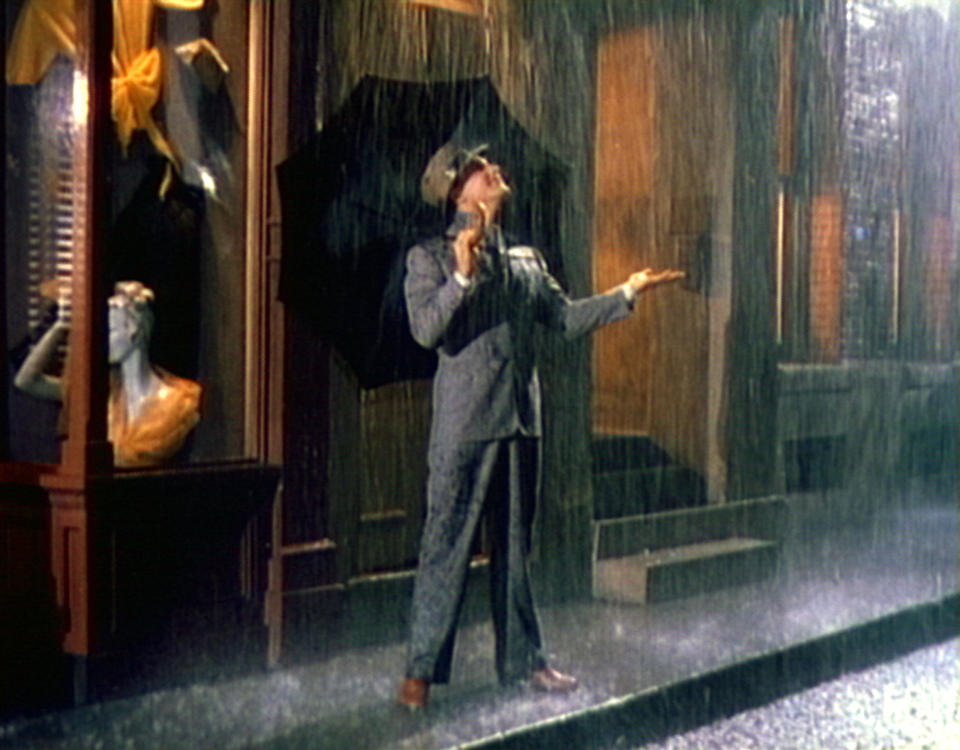How Gene Kelly and ‘Singin’ in the Rain’ Taught John Wick to Fight

It only takes about five minutes of conversation with Chad Stahelski, the director of all four “John Wick” movies, to realize that he’s a passionate cinephile whose unique combination of influences is what gives the “Wick” franchise its distinct look. While Stahelski’s devotion to Sam Peckinpah, Sergio Leone, and other action directors might be expected, it’s an entirely different genre that provides the most important — and perhaps most surprising — basis for his work. “Everybody laughs when I say it, but I love musicals,” Stahelski told IndieWire. “Bob Fosse is a huge inspiration. Gene Kelly in ‘Singin’ in the Rain.’ We didn’t reinvent action or anything with ‘John Wick’ — we just spent all our money and time preparing Keanu to be our Gene Kelly.”
Read More: Why ‘John Wick: Chapter 4’ Earns Its Almost 3-Hour Running Time
More from IndieWire
Chad Stahelski Says 'John Wick 5' Could Still Happen: 'We're Open to It'
Keanu Reeves Gave His 'John Wick 4' Stuntmen Tee Shirts Listing How Many Times They Die in the Film
All of the “John Wick” movies use Stahelski favorites like “Singin’ in the Rain” and “Easter Parade” as structural models, and “John Wick: Chapter 4” is no exception. The 14 action sequences serve the same function as the dance numbers in those classic MGM musicals, moving the story forward and expressing character through movement and gesture. Yet for Stahelski, the influence goes deeper, including how star Keanu Reeves trained for the films. “The way we train people is very dance-oriented,” Stahelski said. “A lot of stunt teams will train their cast members to hit focus mitts, which is a martial arts mentality. Punching the heavy bag is great, but if you can’t remember your moves, it doesn’t matter how hard you can punch or kick.”
In the Video Below: Watch Stahelski on why he teaches Reeves and others dance choreography, not stunts.
Reeves had to remember a hundred moves for a climactic chase and fight sequence on an enormous set of stairs in “John Wick: Chapter 4.” Because missing a single one meant a full reset, Stahelski broke down the moves into a dance to condition Reeves to remember each beat. “When Keanu is doing his gun fu, we’ve trained him not in martial arts but in dance — it just looks like martial arts,” Stahelski said. The intense preparation enabled him to follow the example of “Singin’ in the Rain” director Stanley Donen and let the action speak for itself. “They just had a dolly shot with Gene Kelly. Pretty simple, right? Well, a dolly shot with Keanu Reeves is pretty simple too.”

Murray Close/Lionsgate
The “Singin’ in the Rain” influence also can be felt in the editing as well, which “John Wick: Chapter 4” editor Nathan Orloff says is by design. “I can honestly say that the way I cut this action movie is built around ‘Singin’ in the Rain,'” Orloff told IndieWire. “It’s incredible the way they cut around the dancing in that movie. They never cut to emphasize. They never cut on a dance move.” Following that example, Orloff tried to stay unobtrusive. “I rarely cut on a punch. I would cut around the punch, after the hit on recovery, and then show the beginning of something else. I wanted to dance around the action and not be a part of it, and that’s why Chad and I got along.”
Orloff wanted to showcase the physical dexterity of Reeves and the stunt team in the same way that Donen showcased Kelly, Debbie Reynolds, and Donald O’Connor: “We didn’t need to use editing to make the fighting better; it was a different approach because there was no need to punch up the action.”

Courtesy Everett Collection
One area that did need some help was a final act stretch in which the multiple plot strands of “John Wick: Chapter 4” finally come together; Orloff and Stahelski found it difficult to keep the momentum going, so they turned to another director influenced by musicals. Borrowing the device of a disc jockey whose music ties together the action and whose voice serves as a running commentary from Walter Hill’s “The Warriors” — itself a mash-up of Kurosawa and the Gene Kelly-Stanley Donen musicals “On the Town” and “It’s Always Fair Weather” — Stahelski synthesizes his vast array of influences in one glorious sequence that sends the John Wick franchise into what could possibly be its final moments with an explosion of cinematic enthusiasm. As a master class in how to absorb and repurpose influences, that sequence and the rest of “John Wick: Chapter 4” are perfect illustrations of Jean-Luc Godard’s dictum: “It’s not where you take things from — it’s where you take them to.”
You can listen to the full discussion above, or subscribe to the podcast below:
The Filmmaker Toolkit podcast is available on Apple Podcasts, Spotify, Overcast, and Stitcher. The music used in this podcast is from the “Marina Abramovic: The Artist Is Present” score, courtesy of composer Nathan Halpern.
Best of IndieWire
Guillermo del Toro's Favorite Movies: 52 Films the Director Wants You to See
New Movies: Release Calendar for March 31, Plus Where to Watch the Latest Films
Martin Scorsese's Favorite Movies: 58 Films the Director Wants You to See
Sign up for Indiewire's Newsletter. For the latest news, follow us on Facebook, Twitter, and Instagram.


